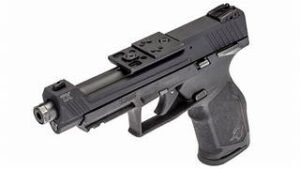Imagine this: you’re cruising down the highway, music pumping, when suddenly your car sputters and stalls. You’re stranded on the side of the road, miles from help. Don’t let this become your reality! With a well-stocked car emergency kit, you can handle most roadside emergencies and get back on your way quickly and safely.

Being prepared for the unexpected is a key part of responsible car ownership. A flat tire, a dead battery, or even a sudden snowstorm can leave you stranded and frustrated. But with a comprehensive car emergency kit, you’ll have the tools and supplies you need to tackle most roadside challenges.
This guide will walk you through everything you need to know about building a car emergency kit, from essential supplies to seasonal considerations and proper kit maintenance. So, buckle up, gear up, and get ready to hit the road with peace of mind!
Building Your Car Emergency Kit
A well-stocked car emergency kit is your first defense against unexpected roadside troubles. Here’s a breakdown of the essential items you’ll need to keep you safe and prepared for any situation:
Essentials for Every Kit:
- First-aid kit (Including car first aid kit and first aid kit for car): This is vital for treating minor injuries or illnesses. Stock yours with bandages, antiseptic wipes, pain relievers, and regular medications.
- Jumper cables: A dead battery can leave you stranded. Jumper cables will help you get a boost from another car.
- Flashlight with extra batteries: A must-have for nighttime emergencies or if your car breaks down in low-light conditions.
- Road flares or reflective triangles: Alert oncoming traffic to your stopped vehicle, especially important at night or during foggy weather. (Include: emergency roadside kit)
- Non-perishable food and water (enough for a day): Being prepared for unexpected delays is key. Pack enough non-perishable food and water to sustain yourself and your passengers for at least a day.
- Multi-tool or basic toolkit (screwdriver, pliers, wrench): For basic repairs or roadside adjustments, a multi-tool or a small toolkit with a screwdriver, pliers, and wrench can be a lifesaver.
- Work gloves: Protect your hands when changing a tire or making repairs.
- Phone charger (car adapter or portable): A dead phone can be isolated in an emergency. Ensure you have a way to keep your phone charged.
- Emergency blanket: This can help retain body heat in cold weather conditions.
- Duct tape and zip ties: These versatile tools can be used for many fixes and adjustments.
Seasonal Considerations:
In addition to the essential items above, consider adding these seasonal extras to your kit:
- Winter (Include: emergency roadside kit): Ice scraper, snow shovel, traction mats, sand/salt for tires. These will help you dig out snow and improve traction on icy roads.
- Summer: Wear sunscreen, a hat, sunglasses, and extra coolant. Sun protection and keeping your engine cool are important during hot summer weather.

Using Your Car Emergency Kit (Emergency Roadside Kit)
Being prepared with your roadside emergency kit is only half the battle. Here’s how to utilize your car emergency kit effectively in various situations:
General Tips:
- Safety First: If possible, park your car away from traffic on a level surface.
- Increase Visibility: Turn on your hazard lights and deploy reflective triangles or flares to warn oncoming traffic, especially at night or during low-visibility conditions. (Include: emergency roadside kit)
- Know Your Limits: Only attempt repairs you’re comfortable with. Don’t hesitate to call for help if you’re unsure or the situation seems unsafe.
- Call for Assistance: Don’t hesitate to contact roadside assistance or emergency services when in doubt.
Specific Situations
Flat Tire:
- Safety First: Park away from traffic and engage the parking brake.
- Loosen the Lug Nuts: Before jacking up the car, loosen the lug nuts on the flat tire slightly (counterclockwise) with the lug wrench.
- Jack Up the Car: Locate the designated jack point on your car (consult your owner’s manual if needed) and carefully position the jack. Raise the car until the flat tire is clear of the ground.
- Remove the Flat Tire: Remove the loosened lug nuts and remove the flat tire.
- Mount the Spare: Put on the spare tire, aligning the holes with the lug bolts. Screw on the lug nuts by hand as much as possible.
- Lower the Car and Tighten Lug Nuts: Lower the car with the jack until the spare tire touches the ground. Then, firmly tighten the lug nuts using the wrench in a star pattern (tightening opposite nuts).
- Double-Check: Before driving away, double-check that the lug nuts are secure. Then, store the flat tire securely in your trunk.
Remember: Consult your car’s owner’s manual for specific instructions on changing a tire for your vehicle.
Dead Battery:
- Park Close Together: Your car faces another vehicle with a good battery close enough to connect the jumper cables.
- Turn Everything Off: Ensure both vehicles are turned off and parking brakes are engaged.
- Connect the Cables: Connect the jumper cables to the batteries of both vehicles in the proper order (positive to positive, negative to last).
- Start the Donor Car: Start the car with a good battery and let it run for a few minutes.
- Attempt to Start the Dead Car: Try starting the car with the dead battery. If it starts, let it run for a few minutes to recharge.
- Disconnect Cables in Reverse Order: Carefully disconnect the jumper cables in the reverse order they were connected.
Remember: If your car doesn’t start after attempting a jump start, there could be a more serious issue. It’s best to call for assistance.

Maintaining Your Car Emergency Kit
Your car emergency kit is a lifeline, but it only works if properly maintained. Here are some key steps to ensure your kit is always ready:
- Regular Inspections: Regularly check your kit at least twice a year.
- Expiration Dates: Pay close attention to expiration dates on food, water, and first-aid supplies. Replace anything that’s expired to avoid contamination or ineffectiveness.
- Battery Power: Replace the batteries in your flashlight and any other battery-operated devices in your kit to ensure they function properly.
- Seasonal Swaps: As seasons change, update your kit with the appropriate seasonal items. Add winter gear like traction mats in the colder months, and swap them for sunscreen and sunglasses in the summer.
By following these simple maintenance steps, you can guarantee your car emergency kit is always prepared to handle any unexpected situation on the road.
Recommended Products We Tested
Tools and Equipment for Handling Roadside Situations
- Flashlights and Batteries: A reliable flashlight, preferably LED, with extra batteries or a hand-cranked option, ensures visibility in poor lighting conditions.
- Multi-Tool with Various Functions: A high-quality multi-tool is indispensable, combining functions like pliers, screwdrivers, wire cutters, and more, offering practical solutions in various situations.
- Reflective Warning Triangles or Flares: These enhance visibility and safety during roadside emergencies, alerting approaching drivers to potential hazards.
Basic Car Repair Items for Temporary Solutions
- Jumper Cables or Portable Battery Booster: Essential for addressing unexpected battery failures, these tools enable jump-starting your car independently or with another vehicle.
- Tire Pressure Gauge and Repair Kit: Monitoring tire pressure and having the means to fix minor punctures are crucial for road safety. A spare tire, properly maintained, is also vital.
- Duct Tape, Zip Ties, and WD-40: These versatile items provide quick temporary fixes, from securing loose parts with duct tape and zip ties to using WD-40 for loosening stuck components.
First Aid Supplies
First aid supplies are crucial in an emergency vehicle kit as they allow you to address injuries promptly and effectively. Among the essential first aid items to include are:
- Bandages: Adhesive strips for minor cuts and scrapes; butterfly closures for deeper wounds.
- Gauze Pads: Various sizes for bleeding control and infection protection.
- Adhesive Tape: Waterproof, to secure dressings firmly in place.
- Antiseptic Wipes/Ointments: For cleansing wounds and preventing bacterial infections.
- Tweezers: For removing splinters or foreign objects from wounds.
- Scissors: For cutting bandages or clothing as needed.
- Disposable Gloves: To maintain hygiene when handling blood or bodily fluids.
- Retail: $35
Tools and Equipment
Aside from first aid supplies, certain tools and equipment are indispensable in an emergency vehicle kit. Here are a few vital items to consider:
- Flashlight: A reliable flashlight is crucial for compromised visibility. LED lights with adjustable brightness settings are recommended due to their energy efficiency and long lifespan.
- Multi-tool: A versatile multi-tool should be made of high-quality stainless steel, ensuring long-term durability. Look for one that incorporates various functions, such as pliers, screwdrivers, knives, and bottle openers. This tool becomes invaluable when repairs or adjustments need to be made.
Conclusion
Imagine the peace of mind that comes from knowing you’re prepared for anything the road throws your way. A well-stocked car emergency kit can be the difference between a minor inconvenience and a major hassle.
Remember, this is a basic template. Feel free to customize your emergency car kit to fit your specific needs and driving habits. Do you travel frequently through remote areas? Include extra food and water. Live in a climate with extreme winters? Pack a blanket and warm clothes. The key is to be prepared for the situations you’re most likely to encounter.
So don’t wait until you’re stranded on the side of the road to start building your car emergency kit. Take action today and ensure you have the tools and supplies you need to stay safe and get back on your way. Happy and safe travels!













